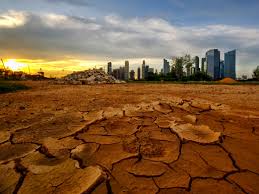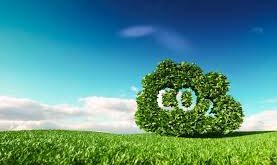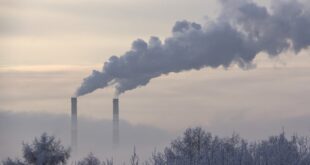To bring home the point. this piece focuses in a comprehensive manner on all types of disastrous impacts of climate change or global warming on all forms of life on planet Earth. I would discuss what environmental calamities are currently happening and what are very likely to happen in the future if ‘climate change’ is not tackled in right earnest with all urgency. Alas. nothing is being taken seriously by the world political leaders and particularly rich nations (US President Donald Trump is a notable case in point). even though it is their rampant overconsumption. pollution and food wastage over more than 150 years (since the advent of the Industrial Revolution) that has greatly contributed to climate change. The International Energy Agency (IEA) recently reported that energy-related carbon dioxide emissions in 2018 rose by 1.7% to 33.1 billion tonnes from the previous year—the fastest since 2013. Is it not alarming!
The latest UN report ‘Global Environment Outlook 6 (GEO 6)’ in this regard is an eye opener. which states as under: The current Nationally Determined Contributions (NDCs) under Paris Agreement (2015) are just a ‘third’ of carbon emissions mitigation required to keep the average global temperature rise below 2 degree Celsius over pre-industrial levels. It means even if NDCs are fulfilled. the temperature will still shoot up to 2.7-3 degrees and may even go beyond 3 degrees with the US withdrawing from the agreement.
Although the report gives a global perspective. the outlook is sadly bleak for India as we may fail to achieve our Sustainable Development Goals (SDGs) despite our many national action plans to achieve them. Moreover. about 60 crore people in India depend on perennial rivers. which are in jeopardy due to glaciers receding and the ground water resources too being adversely affected because of this. Here. I may add that if the world fails to keep the temperature rise under 2 degrees Celsius. rivers of the world (such as Yellow. Ganges. Yangtze. Yamuna and Mekong) would shrink. There would be more uncontrollable droughts. floods. intense landslides and avalanches. India is likely to see the greatest extremes because of its vulnerability and crores of Indians would have to move. The vast areas of Indo-Gangetic plains will become non-liveable by the middle and the end of this century. What a catastrophe it would be?
The report emphasizes adverse health impacts for all people in the world (expected to be 1.000 crore by 2050. of which 66% would be living in urban centres) due to environmental degradation of atmosphere. land. oceans and biodiversity. which would be of irreversible nature.
Earlier. the Intergovernmental Panel on Climate Change (IPCC) report on global warming in October 2018 had stated that global temperature will rise by 1.5 degrees between 2030 and 2052 and a rise beyond 1.5 degrees would mean heat waves. heavy rainfall. water shortage. reduced farm output. coral bleaching and sea levels rising. It would inflict a colossal damage. Coastal nations and agricultural economies like India. already facing climate extremes. would bear the greatest burnt.
There is yet another aspect of severely adverse impacts of climate change. which the world is slowly realising. It concerns various kinds of social stress linked to climate change. leading to conflicts among civilian population the world over. In this regard. I mention a very recent UNICEF report of 2019 which says that the lives of over 1.9 crore (including 5 lakh Rohingya refugees from Myanmar) Bangladeshi children are at risk from impacts of devastating floods and cyclones because of climate change. The report documents that children are being forced into sex trafficking or marriage to survive. which has created tensions among people.
The World Meteorological Organization in its just out annual report has particularly focused on this issue of linkage between climate change and social tensions creating imbalances and instability in many parts of the world in the future. This is simple to understand because climate change adversely affects agriculture. fishing. etc. and thus livelihood. coastal areas get submerged due to rise in sea levels and water scarcity is created. All this induces migration to other parts of the region or urban areas. leading to riots over limited resources as some research studies by reputed institutes in India and UN and other international organisations have brought out. From India’s point of view. Bangladeshi people may migrate to India in case of such calamities due to climate change. It is thought that rebel activities and Maoist movements gain momentum because of climate-related impact on livelihood pushing up migration of civilians to cities. adding to strife.
In view of this grim scenario. a debate is now raging in some parts of the world whether climate change should be a factor in decision to have children. There are even groups such as BirthStrike—people who have decided not to have children because of climate change. Even if this is dismissed as a stupid thought today. the fact of disastrous effects of climate change on our children can’t be denied. In this respect. there was a protest on March 15 this year by schoolchildren across 90 countries of the world as a part of ‘Extinction Rebellion’.
To conclude. rich nations must sufficiently enhance their existing NDCs (in the light of available valuable reports) even magnanimously compensating for the lack of it on the part of the poor and small island nations. They have the financial power to do so. India and China should combine efforts and play strong leadership role by bringing all nations on a common platform at COP 26 in 2020. which would a critical moment for our planet. That is the only way to save humanity.
 Iran Energy News Oil, Gas, Petrochemical and Energy Field Specialized Channel
Iran Energy News Oil, Gas, Petrochemical and Energy Field Specialized Channel




